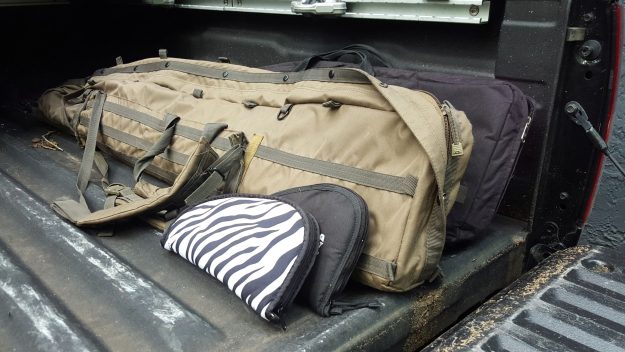By Interest
How To Handle A Medical Emergency At The Range
Published
1 year agoon

Medical Emergencies at the Range
Accidents and injuries happen on shooting ranges, though fortunately they are normally minor or no different than you might see in any other outdoor setting.
Most often, people get hurt in ways that can be fixed by a “boo boo kit” or a quick trip to an urgent care facility or regular doctor’s office. Whether it’s a cut from a staple or a target stand, a mild burn from hot brass, or a rolled ankle from uneven ground, a little common sense and basic first aid are all that are needed for these types of common outdoor activity injuries.

Most range emergencies can be solved with a simple first aid kit
However, more serious medical emergencies can also occur, including weather-related illnesses such as dehydration, heatstroke, hypothermia, and frostbite; individual crises such as anaphylactic shock, blood sugar problems, and heart attacks; and the most feared for many of us, a gunshot wound. A basic first aid class covers everything but best practices for traumatic injury and there is excellent training available on how to provide immediate care for gunshot wounds and the like, but do you know what to do and how to help if you haven’t had that training or if someone more qualified than you is providing that care?

A tourniquet and trauma dressing can be helpful for serious injuries
Traumatic injury and even other serious medical emergencies are the reason why every range and every shooting event should have an emergency plan. Whether it’s a formal plan that is communicated during a group briefing before shooting begins or one that takes shape after an emergency occurs, here are a few elements:
Specific individuals should be directed to perform specific tasks. If an advance plan is put in place, the group can name specific people (and backups if one of those people becomes unable) to call 911, treat the injury as much as possible, ensure all other ranges on the property cease fire, and direct emergency medical personnel to the injured person. It’s important to not add to confusion by having multiple people tripping over each other to help and end up getting in the way, so anyone not involved in implementing the emergency plan should clear the immediate area around the patient.

Basics of the emergency plan can be given before a match during the shooter’s meeting
Having only one person call 911 is especially important in order to prevent a disorganized response by police and emergency medical services. Many people calling with incomplete information could lead police to believe that there is an active shooter type of situation, which can delay the ambulance until the police have secured the property to their satisfaction. Instead, one person should call to report a training accident, request aid, and relay information from the person providing first aid.
Having all ranges on property cease fire, and directing all shooters to make the range “cold” by clearing their firearms and safely stowing them away is another way to help cooperate with getting more and faster help to the patient. Because scene safety is a vital part of all emergency response, indicating in an obvious manner that there is no possibility of additional injuries from gunfire on the range will reassure police and emergency medical services that they can enter the property safely. These actions will also keep the scene less chaotic and make it easier to manage the situation.

Case and put guns away to help emergency responders focus on caring for the patient
Finally, if your range is hard to get to or has confusing interior roads, consider sending people to key intersections to direct emergency medical services to the scene so that they don’t take a wrong turn and end up in the wrong area of the property. At the same time, they can make sure that range roads are clear so that an ambulance can drive past any parked cars.

Example of an emergency plan range map
Everyone else on the range, who isn't involved in the immediate response, should cooperate with making the range cold and otherwise leave or stay away from where the injured person is. It is generally a good idea to stay on property in case of questions from responding emergency personnel, but there’s no need to rubberneck the scene and possibly delay aid from arriving.
Many of these principles are applicable to any emergency situation you may be involved in: designate specific people to act; get out of the way if you’re not one of those people; and stay calm and create calm. Everyone knowing what to do ahead of time means saving precious moments in getting help to an injured person. What’s your plan?
Have you ever been involved in a range emergency before? How was it handled? Let us know in the comments below, and make sure you like Gun Carrier's Facebook page.
You may like

CZ 75 SP01 Tactical Gun Review | Gun Carrier

PODCAST: Gun Law Changes All Across America Right Now

PODCAST: How to Win Olympic Gold

PODCAST: 50 Important Ideas For Self-Defense, Self-Reliance, and Personal Safety

10 Best Gun Safes In 2022 | Gun Carrier

DP-12 | Double Barrel Pump Shotgun Gun Full Review


